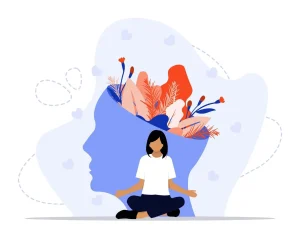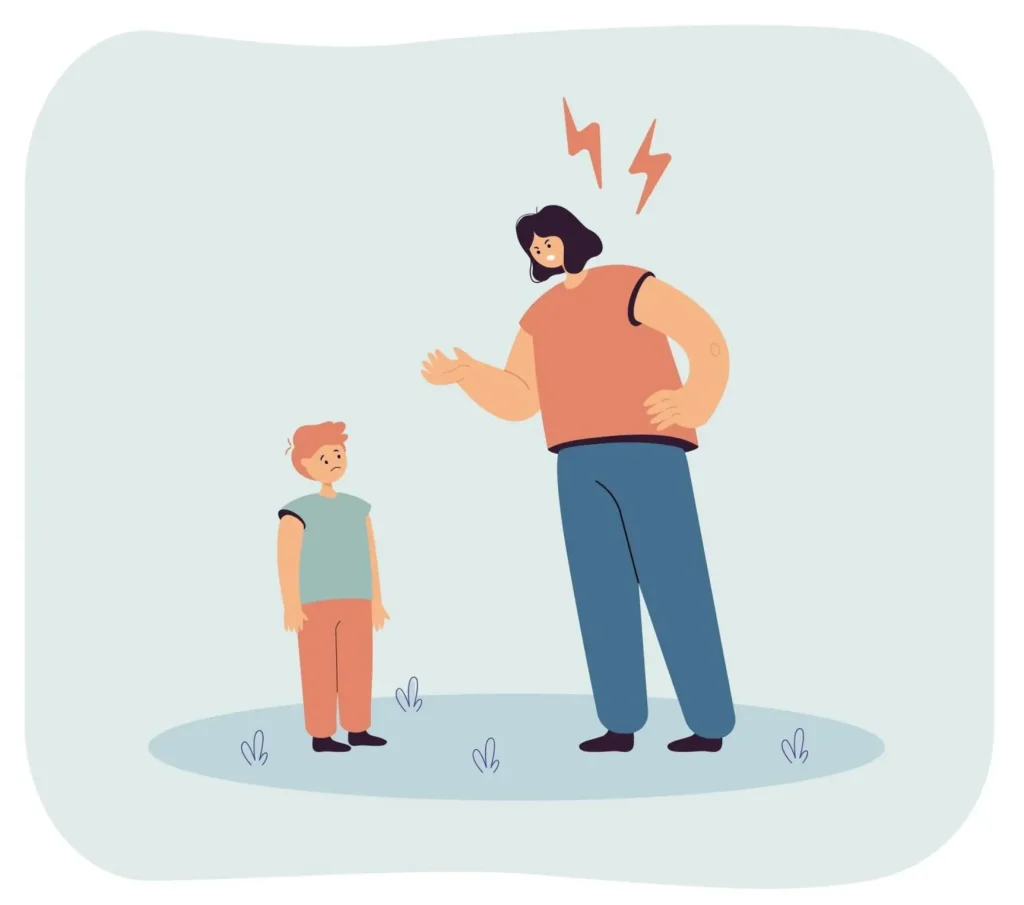Ethical Innovation to Promote Mental Health
How ArtigenTech Uses Ethical Innovation to Promote Mental Health
In today’s world, stress is common, burnout is normalized, and digital dependency is constant, but mental health in today’s generation is more crucial than ever. From the work pressure and academic performance to the loneliness enlarged by social media, mental well-being is being tested at each and every stage of our lives.
We at ArtigenTech strongly believe that technology should not just solve the problems—it should elevate the human experience. That’s why we are devoted to building technology that is not only smart but also inclusive, ethical, and supportive of mental health in all walks of life across.
This blog discusses ArtigenTech’s use of ethical innovation to support mental health, its importance in the modern world, and how it fits with our goal of building a healthier and more conscious digital future.
What is mental health? Definition, meaning with example
Let’s define mental health. 
Mental health refers to our emotional, psychological, and social well-being. It affects how we think, feel, act, make choices, and relate to others.
Examples and meanings of Mental Health: H3
- The capacity to manage pressure at work.
- Establishing wholesome connections.
- Controlling feelings in the face of failure.
- Asking for assistance when feeling stressed or overwhelmed.
Every stage of life, from childhood to adulthood, is impacted by mental health, whether it is managing exam pressure or dealing with burnout at work.
Why Is Mental Health Important in Today’s Generation?
We have to understand the extent of the mental health crisis before focusing on technological solutions.
- 1 in 5 adults in the U.S. suffers mental illness annually.
- More than 60% of young adults (18–25) say they have depression or anxious symptoms.
- Economic instability, societal expectations, and digital overload are all major contributors.
- Men’s mental health is often overlooked with 75% of suicide deaths in U.S
- Over 1 in 3 person seeks for professional help with mental health condition
- An estimated $1 trillion is spent annually on lost productivity as a result of anxiety and depression.
Every aspect of contemporary life is impacted by mental health, from teens navigating social identity to adults balancing jobs, parenthood, and financial strain. It impacts our thoughts, emotions, work, learning, and interpersonal relationships.
Why Innovation in Technology Must Focus on Mental Health
With AI in every app and smartphones in every pocket, how we use technology has a big impact on our mental health. Yet, although technology can improve life, it can also increase tension, separation, and comparison.
That’s where the ethical innovation takes place.
At ArtigenTech, ethical innovation is the deliberate development and application of technology that upholds human dignity, fosters well-being, and prevents harm. Every solution we develop, from enterprise tools to intelligent systems that assist healthcare providers, is guided by this philosophy.
Addressing Men’s Mental Health and Male Wellness
 Men’s mental health still continues to be underrepresented in the wellness conversation. One of the biggest issues facing men’s health today is social stigma, which frequently keeps men from expressing their feelings or asking for assistance.
Men’s mental health still continues to be underrepresented in the wellness conversation. One of the biggest issues facing men’s health today is social stigma, which frequently keeps men from expressing their feelings or asking for assistance.
ArtigenTech actively promotes the mental health of men by
- Normalizing discussions about mental health in online communities.
- Encouraging male team members to take mental health time off.
- Implementing gender-neutral platform design and workplace support tools.
Here is a common risk factor for mental health conditions
Everyone is at risk of developing a mental health disorder, regardless of age, income, or ethnicity. In the U.S., depression is one of the leading causes of disability.
A person’s mental health can be influenced by a variety of biological factors, underlying medical conditions, negative childhood experiences, social and financial circumstances, and more.
Many people who suffer from mental health disorders also have multiple conditions at the same time.
The development of a mental health disorder can be caused by a number of factors, and it is crucial to remember that mental health depends on a balance of these factors.
Myth vs. fact about mental health
Myth | Fact |
An individual with mental health has low intelligence. | Mental health disorders can affect anybody, no matter of intelligence, social status, or income. |
Teenagers have changes in mood rather than mental health issues due to their fluctuating hormones. | Teenagers often have mood changes, but It does not mean they don’t have mental health at all. It begins at the age of 14. |
A person with a mental health disorder is violent, dangerous, and unpredictable. | Serious mental health disorders account for only 5% of all violent crimes committed by individuals. |
Psychiatric medications are harmful. | A healthcare professional may prescribe medication to manage symptoms in day-to-day life. |
Bipolar disorder patients are irritable. | Bipolar disorder cycles, lasting weeks to months, do not change quickly but can cause rapid emotional changes. |
People with mental health issues are unable to hold down a job and do it effectively. | People with mental health conditions can excel in a workplace that fosters and supports their mental well-being. |
Mental health disorders can be caused by the following factors:
Socioeconomic pressure:

- According to an Iranian study conducted in 2015, healthcare biases can raise the risk of mental health disorders for marginalized ethnic groups and those with limited financial resources.
- The accessibility and caliber of mental health care treatment can be impacted by elements like poverty and residing outside of major cities.
- Gender, age, ethnicity, and nationality are nonmodifiable factors, whereas work availability, occupation, social involvement, education, and housing quality are modifiable.
- Low mental health status was found to be almost four times more likely to occur in females.
Childhood adversity:

- A child’s mental and physical health are greatly impacted by childhood traumas such as abuse, loss, separation, and illness.
- These experiences can result in mental health disorders and heightened susceptibility to post-traumatic stress disorder (PTSD).
Biological factors:
- According to the National Institute of Mental health, certain genes and variants may make mental health disorders more likely to occur in a family. However, a mental health disorder’s occurrence is not assured by the presence of a gene linked to it.
- A mental health disorder can also affect people who don’t have a family history or related genes. Physical health issues can lead to mental health disorders and chronic stress.
Types of Mental health Disorder
Medical professionals categorize mental health conditions based on shared characteristics. Among them are
1. anxiety disorders 2. mood disorders 3. schizophrenia disorders
1. Anxiety disorders
These are the most common disorders; people with this condition have fear or anxiety about certain objects or situations. They try to avoid exposure triggers, but a person with GAD may feel anxiety disorder with no trigger at all.
The following is the list of anxiety disorder:
- restlessness
- fatigue
- poor concentration
- tense muscles
- interrupted sleep
Phobias:
There are many types of phobias, and the problems served by one person might dominate the life of another person. These types may include:
Simple Phobias: disproportionate fear of specific objects, scenarios, or animals. Eg: fear of spiders.
Social Phobia: also called agoraphobia, the fear of situations that get difficult. E.g., being watched or judged by people.
Agoraphobia: This refers to fear of situations that get difficult or fear of being outside. E.g., moving train or elevator.
Panic Disorder:
This disorder refers to regular panic attacks, which involve sudden, overwhelming terror or a sense of imminent disaster and death.
Obsessive-compulsive disorder: people with obsessive-compulsive disorder (OCD) may experience constant, stressful thoughts that urge them to do regular activities like handwashing, etc.
Post-traumatic Stress Disorder: PTSD can occur a witnesses or traumatic event after a person experience. They think their life and other lives are in danger; thus, they can also feel like they have no control over what is happening.
These sensations of trauma and fear may then contribute to PTSD.
2. Mood Disorder
This is also referred to as affective disorder or depressive disorders. A person with a mood disorder will have continuous mood swings, a stage-like high energy, joy, or depression.
Major depression: a person with major depression undergoes a stable low mood and loses interest in their regular activity. They may also feel prolonged periods of sadness or extreme sadness.
Bipolar Disorder: An individual with bipolar disorder experiences unusual changes in their energy, activity, and ability to continue with regular life. High moods are known as manic phases, while depressive phases are called low moods.
Seasonal affective disorder (SAD): Reduced daylight during the fall, winter, and early spring months triggers SAD, a type of major depression. Trusted Source.
Seasonal affective disorder (SAD): Reduced daylight during the fall, winter, and early spring months triggers SAD, a type of major depression Trusted Source.
3. Schizophrenia Disorder
The term “schizophrenia” refers to a spectrum of disorders characterized by features of psychosis. These are highly complex conditions. According to NIMH, signs of schizophrenia typically develop between the ages of 16 and 30. A person can have thoughts that are fragmented and find it hard to process information.
It also has positive and negative symptoms. Positive symptoms will include delusions, thought disorders, and hallucinations, while negative symptoms include lack of motivation, inappropriate moods, etc.
Common signs of mental health
A physical test or scan will not indicate whether a person suffers from mental health issues or not. However, here are the possible signs to look out for:
- Withdrawing from social connections and avoiding usual activities
- Irregular sleep and eating patterns
- Persistent hopelessness and low energy levels
- Increased use of substances like alcohol and nicotine
- Emotional instability, confusion, or delusional experiences
- Difficulty completing daily tasks and recurring harmful thoughts
Treatment

Various methods and treatments are available to manage mental health conditions. Treatments are highly personalized, and what works for one will not work for another.
Some strategies are successful when combined with others. An individual with a mental health disorder may choose various opinions at various stages of life.
To provide treatment and help them to identify their need, it is important to work closely with doctors.
The following is the list of treatments to undergo:
1. Psychotherapy, or talking therapies
- Cognitive behavioral therapy (CBT)
- Exposure therapy
- Dialectical behavior therapy
2. Medication
- Antidepressants
- Antipsychotics
- Drugs for anxiety.
3. Self-help
- Sleep quality
- Nutritious diet
- Deep breath and mindfulness
Steps to maintain mental well-being
The following are the steps that help a person to manage mental health by reducing the risk of illness and maintaining stress and energy levels:
Regular exercise: An individual’s mental health can be enhanced by doing 45-minute exercises three to five times per week.
Eat a balanced diet and stay hydrated: This can assist an individual in sustaining a steady flow of energy throughout the day.
Aim for good-quality sleep: According to a 2021 review, major improvements in sleep quality are linked with even bigger gains in mental health.
Perform relaxing activities: Writing, wellness applications, breathing exercises, and meditation can help to reduce anxiety and improve general health and well-being.
Positive social interactions: Maintaining meaningful relationships can reduce stress, provide support, and offer practical help during times of need.
Summary
Mental health encompasses cognitive, behavioral, and emotional well-being, influencing stress response, social interactions, and decision-making. Peak mental health involves managing existing conditions and stressors while maintaining wellness and happiness. Healthcare professionals can assist individuals with mental health conditions through therapy or medication.
Get A Quote
Recent Post
 13 Jun 2025 Manual vs. AI-Assisted Radiology Coding
13 Jun 2025 Manual vs. AI-Assisted Radiology Coding 13 Jun 2025 Manual vs. AI-Assisted Anesthesia Coding
13 Jun 2025 Manual vs. AI-Assisted Anesthesia Coding


